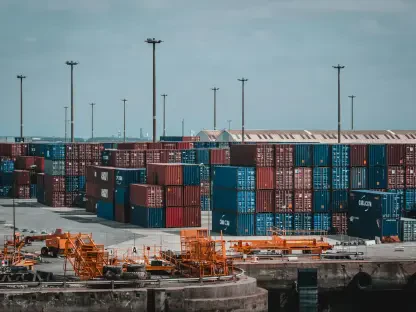President Donald Trump’s declaration of a National Economic Emergency has sparked significant debate and analysis. This bold move aims to address various economic issues, including trade imbalances, government waste, and the looming insolvency of major social programs. By leveraging tariffs and economic strategies, President Trump seeks to rectify long-standing disparities in international trade and enforce fiscal discipline within the federal government.
Addressing Trade Imbalances
The Call for Reciprocity in Tariffs
One of the central aspects of President Trump’s economic strategy is the call for reciprocity in tariffs. For decades, countries like the European Union (EU) and India have imposed significantly higher tariffs on U.S. products compared to the tariffs the U.S. levies on their imports. For instance, the EU charges a 56% tariff on Harley-Davidson motorcycles, while U.S. tariffs on European motorcycles are much lower. Similarly, the EU imposes a 10% tariff on U.S. cars, whereas the U.S. charges only 2.5% on European cars. In another example, India has an average tariff of 17% on U.S. products, while the U.S. imposes only a 3.3% tariff on Indian goods.
These differences represent just a fraction of the extensive list of trade imbalances that exist between the United States and other global trading partners. Such discrepancies have led to a competitive disadvantage for U.S. businesses in international markets. President Trump’s advocacy for reciprocal tariffs is aimed at leveling the playing field and ensuring fair trade practices. The Council on Foreign Relations has also acknowledged these disparities and supported the idea of addressing them. By implementing reciprocal tariffs, the Trump administration hopes to create a more balanced and equitable international trade environment.
Justifying Reciprocal Tariffs
These examples highlight the significant trade imbalances that have persisted for years and demonstrate the need for a more assertive approach to international trade policy. The concept of reciprocal tariffs is not just about matching numbers; it represents a fundamental shift toward ensuring that U.S. businesses are not unfairly disadvantaged by the protectionist policies of other countries. By aligning tariff policies more closely with those of trading partners, the Trump administration believes that it will encourage more equitable trading relationships and reduce the incentives for countries to impose unfair trade barriers.
The justification for this approach goes beyond mere numbers; it is about restoring a sense of fairness and reciprocity in global trade. The current imbalances have resulted in a situation where U.S. products face steep barriers abroad, while foreign goods enjoy relatively easier access to the American market. The administration’s push for reciprocal tariffs underscores the need for a more assertive stance in international trade negotiations, aiming to achieve long-term benefits for the U.S. economy. This approach also seeks to incentivize other countries to revisit and potentially lower their own tariff barriers, paving the way for more open and fair trade practices globally.
Tackling Government Waste and Fraud
Uncovering Illicit and Wasteful Spending
Another critical issue addressed by President Trump’s declaration is the significant amount of illicit and wasteful spending within the federal government. The Department of Government Efficiency (DOGE), led by Elon Musk, has uncovered a staggering $2.7 trillion in improper, potentially fraudulent payments. These payments include funds channeled to non-existent or illegal entities, with some even reaching groups like Middle Eastern terrorists or dubious biolabs in countries such as China. The sheer scale of these uncovered misappropriations has sent shockwaves through both political and public spheres, shedding light on the urgent need for rigorous oversight and financial accountability within federal operations.
The implications of such widespread financial mismanagement are profound, threatening the integrity of governmental programs and undermining public trust. The DOGE’s findings highlight a deeply rooted problem that has been festering within the federal system for years. White House Press Secretary Caroline Leavitt emphasized that these issues are not just about figures on a balance sheet but represent a broader systemic failure that jeopardizes the efficacy of government programs and services. By identifying and addressing these inefficiencies, the Trump administration aims to restore fiscal responsibility and ensure that taxpayer dollars are used effectively and ethically.
The Role of DOGE in Exposing Waste
The creation of DOGE has played a crucial role in identifying and exposing wasteful spending. Initially established by Barack Obama in 2014 as the US Digital Service, it was later renamed and repurposed by President Trump in 2025. The agency operates under existing frameworks, making it difficult for Congress to defund it. The ongoing audits and disclosures by DOGE have created a groundswell of public demand for governmental reform, which the Trump administration is capitalizing on. The agency’s work not only reveals financial mismanagement but also provides a roadmap for potential reforms aimed at creating a more efficient and accountable federal government.
The establishment of DOGE signals a commitment to transparency and efficiency within federal operations, reinforcing the Trump administration’s broader objective of enforcing discipline in government spending. By continually auditing and exposing wasteful expenditures, DOGE has empowered policymakers to make informed decisions based on comprehensive data and analysis. This approach aligns with President Trump’s broader economic strategy of promoting accountability and reducing unnecessary government expenditure, contributing to a more prudent and financially sustainable federal framework. The public demand for reform, fueled by the findings of DOGE, underscores the growing concern among citizens for fiscal responsibility and efficient use of taxpayer funds.
The Looming Insolvency of Social Programs
The Critical State of Social Security and Medicare
Rep. Eric Burlison (R-MO) testified before a House Subcommittee, highlighting the critical state of America’s major social programs. Social Security is projected to be insolvent in eight years, while Medicare is on track to become insolvent in ten years. The national debt has ballooned, with annual interest costs rising by $2 trillion, thereby undermining the U.S. dollar. This looming insolvency presents a dire scenario for millions of Americans who rely on these programs for their retirement and healthcare needs. If drastic measures are not taken, the U.S. dollar could become worthless in 15 years, posing a significant threat to the nation’s economic stability.
Burlison’s testimony underscores the urgency of addressing these fiscal challenges head-on. The projected insolvency of Social Security and Medicare signals a broader systemic issue that requires comprehensive policy solutions. The escalating national debt and rising interest costs exacerbate the financial pressure on these programs, highlighting the need for substantive reforms to ensure their long-term viability. The Trump administration’s efforts to expose and reduce government waste through DOGE are seen as integral to addressing these challenges, aiming to redirect resources towards sustaining essential social programs and mitigating the impending crisis.
The Need for Drastic Measures
Burlison praised DOGE’s efforts in exposing wasteful spending and noted that many big government programs, often controlled by Democrats, are guilty of this mismanagement. This situation has led to accusations from Democrats that President Trump is acting like a dictator and attempting to manipulate laws to extend his stay in power. However, the article counters this by arguing that President Trump is actually trying to shrink the bloated federal government, which runs counter to the actions of a dictator. The focus on reducing waste and reforming fiscal practices is posited as a necessary intervention to safeguard the financial future of critical social programs.
President Trump’s administration argues that the drastic measures proposed are not about consolidating power but ensuring the sustainability and efficiency of government operations. By identifying and eliminating wasteful spending, the administration aims to create a leaner, more effective government that can better serve the American people. The emphasis on fiscal responsibility and reform is framed as an effort to avert an impending economic crisis, preserve the solvency of essential social programs, and restore public trust in government institutions. The narrative suggests that these measures are crucial steps towards achieving long-term economic stability and protecting the well-being of future generations.
Immediate Effects on International Trade
Strengthening Border Security Measures
President Trump’s declaration has already seen some immediate effects on international trade. Following the announcement of a 25% tariff, Mexico and Canada agreed to strengthen their border security measures to curb illegal crossings and drug trafficking. These actions indicate that Trump’s strategy could bring about significant changes in international trade dynamics. By leveraging economic pressure through tariffs, the administration aims to address broader security concerns, highlighting the interconnectedness of trade policy and national security.
The cooperation from Mexico and Canada suggests a willingness among neighboring countries to engage in collaborative efforts to tackle shared challenges. The imposition of tariffs, coupled with commitments to enhance border security, reflects a multifaceted approach to addressing complex issues at both the economic and security levels. It also demonstrates the potential effectiveness of using economic leverage as a tool for achieving broader policy objectives. This strategic alignment underscores the administration’s broader vision of creating a more secure and stable regional environment, reinforcing the link between economic policies and national security goals.
Panama’s Response to U.S. Tariffs
In response to the economic emergency declaration, Panama removed fees on U.S. ships passing through the Panama Canal for the next 12 months. This move demonstrates the potential for President Trump’s strategy to influence international trade policies and create more favorable conditions for U.S. businesses. The decision by Panama to waive fees indicates a recognition of the significant economic leverage that the United States holds and showcases the broader impacts of the administration’s trade policies on global economic dynamics.
This development highlights the potential benefits of assertive trade policies in creating more advantageous conditions for U.S. businesses and fostering stronger bilateral relationships. The removal of fees for U.S. ships enhances the competitiveness of American businesses in global trade routes, providing a tangible example of how strategic economic policies can yield significant benefits. The broader implications of such actions suggest that the administration’s approach to trade could lead to more favorable outcomes for U.S. businesses, promoting economic growth and strengthening America’s position in the global economy.
Long-Term Implications for Economic Policy
President Donald Trump’s decision to declare a National Economic Emergency has ignited widespread debate and analysis. This audacious move aims to tackle various pressing economic challenges, such as trade imbalances, government inefficiency, and the threatening insolvency of crucial social programs like Social Security and Medicare. By employing tariffs and a range of economic strategies, President Trump intends to address persistent disparities in international trade, ensuring that American industries are no longer disadvantaged. Moreover, the declaration aims to enforce stricter fiscal discipline within the federal government, curbing wasteful spending and improving financial management. His administration believes that these measures will not only bolster the economy but also secure long-term economic stability and growth. By focusing on these key areas, President Trump hopes to create a more balanced and fair economic landscape, promoting prosperity for American workers and businesses. The debate continues as analysts and policymakers weigh the potential impacts and implications of this bold move on both domestic and international fronts.









